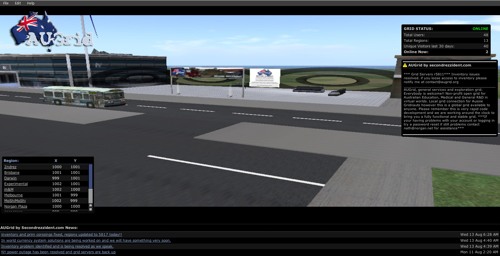Back in February we profiled Openlife, an alternate Second Life-based grid. The realXtend platform underpins grids like Openlife and since February they’ve achieved some significant milestones. Now up to version 0.3, the 3D modelling in realXtend is something to see now. Here’s a snippet:
Caleb Bookers states “When these guys hit 1.0 the web will quake”. At the very least, the graphical improvement on Second Life will cause some sort of impact.
If you’re super keen, download realXtend for yourself – Windows PC’s only at this stage unfortunately.


Recent Comments